Spink Books has been supplying and publishing numismatic reference works to collectors for over 100 years. The acquisition of the Seaby imprint in 1996 further strengthened their reputation as the worldwide leader in this field. Many Spink titles have become the definitive reference works used by collectors, dealers and auctioneers worldwide, including its annual Coins of England catalogue, Roman Coins and Their Values and other classics by David R. Sear.
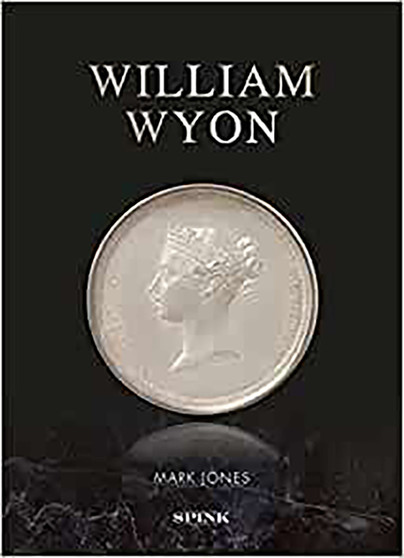
Format: Hardback
Pages: 400
ISBN: 9781912667796
Pub Date: 28 Feb 2025
Description:
Chief Engraver at the Royal Mint and the leading medallist of his time William Wyon RA (1795-1851) produced some of the best known and most widely distributed images ever made. His portraits of the young Queen Victoria on the coinage, used throughout the British empire, and the more regal head used for the first postage stamps, the penny red and twopenny blue, were reproduced in their millions and distributed all around the globe. A highly regarded modeller in low relief, known and admired for the classical purity of his compositions and the accomplishment of their execution, Wyon was celebrated as a British artist who more than rivalled his continental competitors, favoured by royalty and by many of the most prominent and influential figures of his time.
The book aims to understand how and why Wyon's work was commissioned and how it was received, using institutional archives, contemporary correspondence and reminiscence, and the popular press, to create a rounded picture of the life, work, networks, influence and impact of an artist who was also an entrepreneur on his own account and a public servant at the heart of the establishment. Wyon's career began with a major contribution to the execution of the monetary reform that created a new and widely respected coinage which underpinned and symbolised the global growth of the British economy. The medals, which he made throughout his career, reflect their time: commissioned to celebrate and reward the scientific and technological progress, the improvements in education and agriculture, the literary and artistic achievements, the passion for making things better and recognising and encouraging those who did, that characterised Wyon's contemporaries. Almost every major figure of the age is here, from Prince Albert and Queen Victoria, to Palmerston, Peel, Wellington and Gladstone; from Maria II of Portugal and Mrs Sweetenham Waters to Sir Joseph Banks, Sir Walter Scott, Sir John Soane and Thomas Telford. And yet the prosperity that enabled his patrons to commission Wyon's work, often came from the profits derived from the long hours and appalling conditions of industrialising Britain, from enslaved labour in the West Indies and from imperial aggression in India and the Far East. Late in his career it was Wyon who was commissioned to create the military and naval medals that recognised and rewarded the service of those who had fought in the Napoleonic wars; of those who had played a part in the establishment of British rule in India, and those who fought in contemporary wars in Afghanistan, India and Burma, and to force opium on China: medals which, despite moments of revulsion in parliament and the press, reflected pride in Britain’s growing empire.Wyon's work throws new light on the attitudes and networks that lay behind official commemoration at a time of ebullient energy and rapid change and holds a hitherto unexamined mirror to the British establishment in the first half of the nineteenth century. The close interrogation of things, of obstinate objects which insist on remaining themselves, provides us with an image which manages to be both arcane and popular, utterly conventional and intriguingly unexpected.
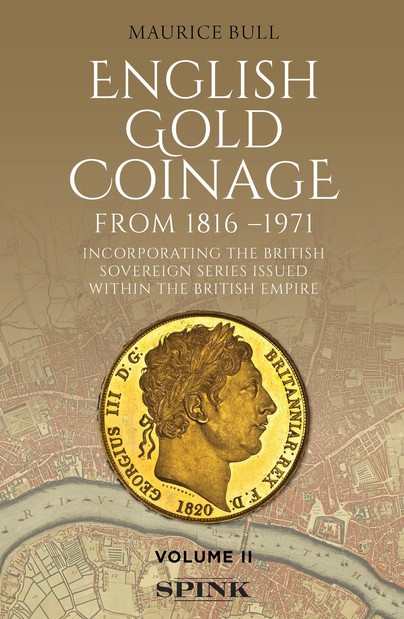
Format: Hardback
Pages: 480
ISBN: 9781912667727
Pub Date: 30 Nov 2023
Series: English Gold Coinage
Description:
The second volume of this brand new comprehensive guide covers every type of English gold coin from 1816 onwards and includes many new varieties, along with rarity values, arranged by monarch. Accompanying Bull reference numbers are again cross-referenced to the Standard Catalogue of British Coins.
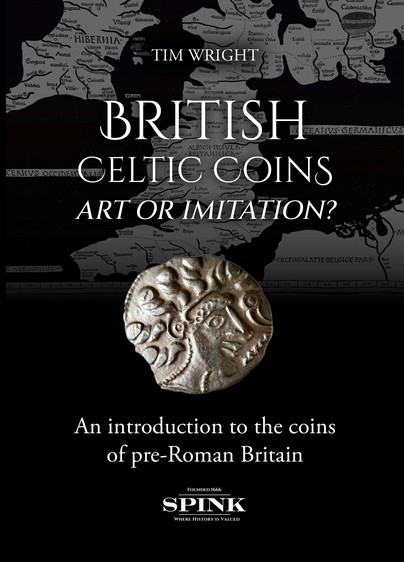
Format: Hardback
Pages: 144
ISBN: 9781912667987
Pub Date: 31 Oct 2023
Description:
The peoples of pre-Roman Britain remain an enigma. Our perceptions are shaped by two narratives, that of contemporary Roman colonists and more recent Celtic nationalists, who vilify and glorify them in equal measure. The more we learn, the less we know with certainty: should they be described as ‘Celtic peoples’, were they organised into the ‘tribes’ that later formed Roman administrative districts (civitas) and, beyond a few famous names like Cunobelinus (Shakespeare’s Cymbeline), were they led by ‘kings’ or ‘chieftains’?
The coins from this period are no less controversial. Britain was a late adopter of coinage, initially importing coins from the Gallo-Belgic continent and then copying their Macedonian-inspired prototypes. Britain also produced them for longer than the continent, latterly incorporating themes and imagery from Rome. These bookends of external influence have led some to dismiss the coins of pre-Roman Britain (and indeed ‘Celtic’ coins generally) as inferior. The most compelling counter to this is the coins themselves, explored through the theme of Art or Imitation? What we find is extraordinary variety and originality, that makes a powerful case for their collection and study.
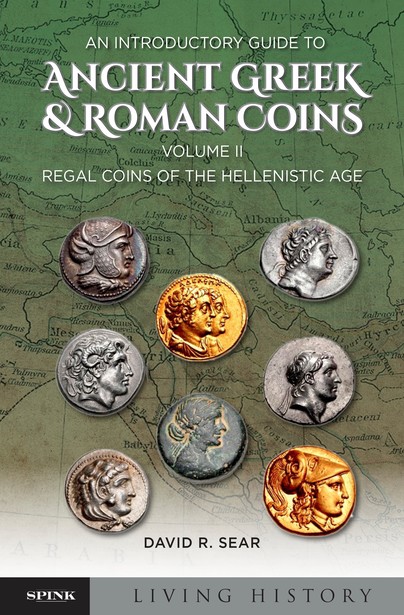
Format: Hardback
Pages: 336
ISBN: 9781912667871
Pub Date: 15 Mar 2023
Description:
The second volume of David R Sear’s comprehensive guide to ancient coins – part of Spink’s Living History series – covers Hellenistic Regal Issues. A general background to the fascinating world of ancient coins, looking back more than 26 centuries to the lands of the eastern Mediterranean, at how coins were designed and produced, and at how they can reveal so much to us today of the time in which they were produced.

Format: Hardback
Pages: 104
ISBN: 9781912667901
Pub Date: 31 Oct 2022
Illustrations: Fully illustrated throughout
Description:
Enter the wonderful world of whisky casks to learn about a unique investment opportunity. We are in the grip of the greatest period of uncertainty since the 2008 financial crash. Volatility is rocking global financial markets, and inflation is back with a vengeance.
Investors are seeking capital preservation and stable returns. Whisky casks can provide both. Two unique attributes make whisky casks different from the other safe-haven assets. Whisky casks automatically appreciate in value as time passes because the spirit within them becomes more precious as it matures – and you can curate your own whisky cask to maximise your returns. Add to that supply constraints, deep heritage and a booming market that has been unaffected by Covid-19 and geopolitical tensions, and you have an uncorrelated investment that can offer stable annual returns of 10-12% and a hedge against rising inflation.This book tells you everything you need to know to start investing in whisky casks. It uncovers the history of whisky cask investment and explains how to choose and curate your cask, highlighting the factors to consider when creating a portfolio of casks. With cask prices starting at around £1,500, whisky cask investment is open to almost everyone. It provides an enjoyable way to diversify your investment portfolio in uncertain times with the promise of outstanding returns. Unlock the door to a new investment that could revolutionise your personal finances – with a few tasty drams along the way.
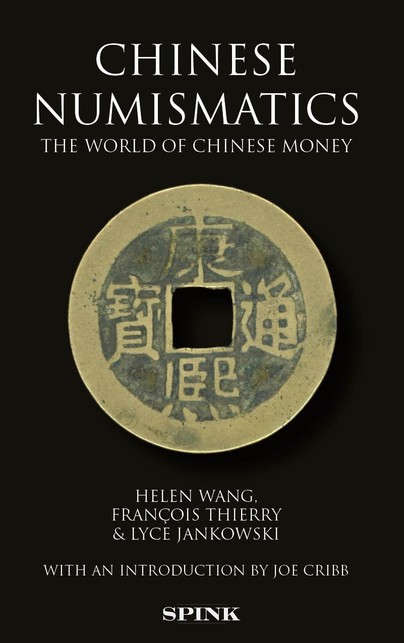
Format: Paperback
Pages: 96
ISBN: 9781912667888
Pub Date: 31 Jul 2022
Description:
This is the first book to explore the history of the field of Chinese numismatics from both Eastern and Western perspectives. With upwards of 100 illustrations, it consists of three papers that complement each other beautifully and give a sound introduction to the beginnings of the study of Chinese numismatics, focusing on the 19th century: A Short History of Chinese Numismatics in Western Languages – Helen Wang A run-through of publications on Chinese numismatics to 1900 – giving information about the authors, their occupations, motivations and areas of interest. A good background to the subject, and includes information on where to find bibliographies etc.
Currencies of Ancient China from their Origins to the Late Empire – Francois Thierry, translated from the French by Helen Wang and Lyce Jankowski Also the title of Francois Theirry’s award-winning book, published in 2017 – the result of having worked for decades as the curator of Asian coins in Paris. The author notes how Europeans sometimes understood Chinese money and sometimes got it completely wrong. Numismatic Friendship: Social Networks of Numismatists and Coin Collectors During the Late Qing Dynasty – Lyce Jankowski, translated from the French by Lyce Jankowski and Helen Wang Also the title of the author’s book published in 2018, and a very important piece of work. It shows the world of Chinese collectors of Chinese coins, their networks and motivations.
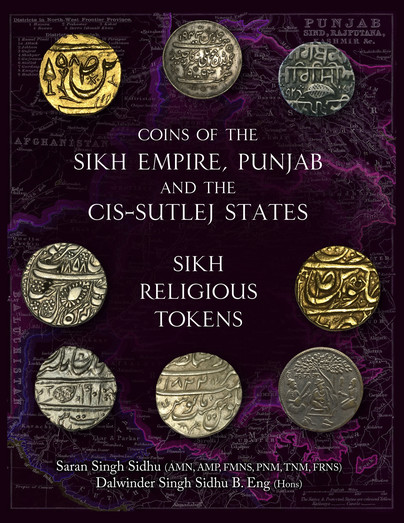
Format: Hardback
Pages: 608
ISBN: 9781912667802
Pub Date: 25 Jun 2022
Description:
This comprehensive catalogue, which has been worked on by the authors over several years, covers all known Sikh Copper, Silver and Gold Mohurs, including much unpublished material, with photographs of each; coins of the Cis-Sutlej States, with photographs of all Sikh states (Patiala, Nabha, Khaital) plus additional details on MalerKotla; medals issued to Sikhs from the 1840s to 1947; and Sikh Temple Tokens, Medallions and Commemorative Coins issued since the 1800s. It is the most up-to-date and authoritative book on the subject, and an essential addition to the library of any collector interested in this fascinating area of coinage.
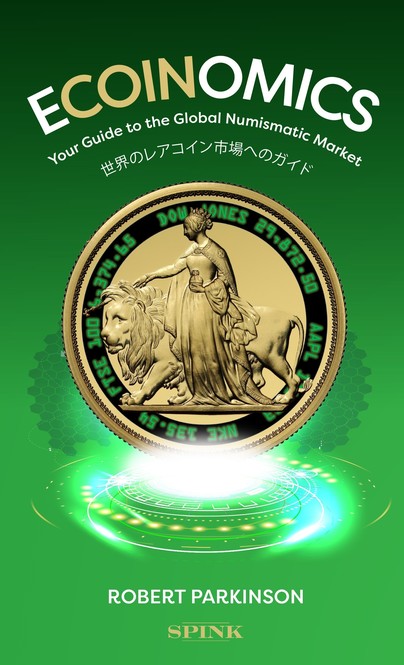
Format: Paperback
Pages: 312
ISBN: 9781912667789
Pub Date: 25 Jun 2022
Description:
Ecoinomics is designed to equip the reader with a full working knowledge of the global numismatic market and how it differs from country to country; it details the various factors which contribute to the value of a coin, as well as different collecting practices (such as third-party grading in the US). Covering the range of costs and benefits involved with keeping a substantial amount of capital in coins, including performance over time, market trends, tax and insurance, Ecoinomics aims to give the reader the confidence to buy coins and to begin participating in the numismatic market. "Robert Parkinson has written an interesting and informative guide that explains many of the most important topics in numismatics.
This book will serve as a valuable resource for new and experienced collectors alike." Max Spiegel, President, Certified Collectibles Group / NGC
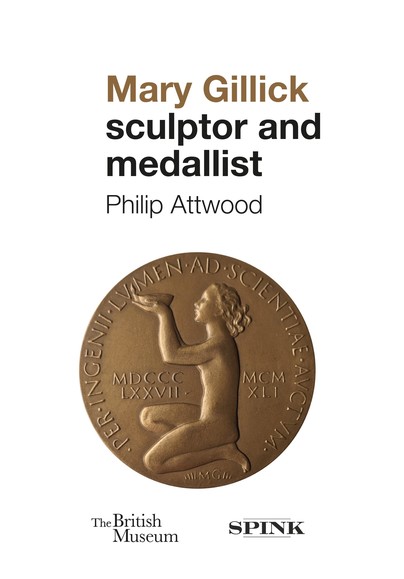
Format: Hardback
Pages: 152
ISBN: 9781912667758
Pub Date: 25 Jun 2022
Description:
Mary Gillick, née Tutin (1881-1965), is probably best remembered for the portrait of Queen Elizabeth II that appeared on UK coins from the beginning of her reign until decimalisation in 1971. This book focuses on her career as a sculptor and medallist - a career that had begun at Nottingham School of Art and the Royal College of Art and had already spanned more than fifty years when she experienced the sudden burst of national fame that came with the royal commission. Gillick’s work combines the influence of early Italian Renaissance medals with an appreciation of modernism and shows a readiness to adapt as she responded to changes in the art market.
Her experience also adds to the debate on the impact on women of marriages between artists (she was married to sculptor Ernest Gillick from 1905, until his death in 1951) and the choices open to women sculptors of her time. This is the very first study of such an iconic British artist to be published, and is sure to attract the attention of both numismatists and anyone interested in the history of British art alike.
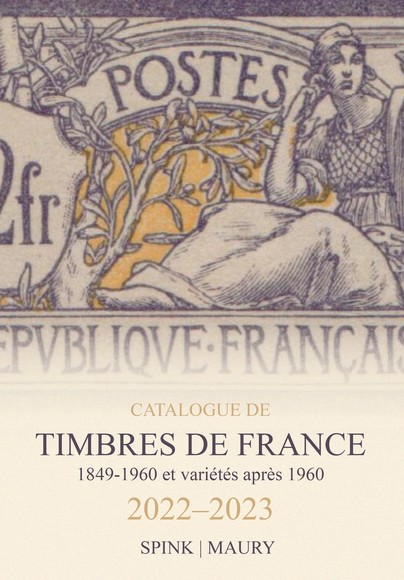
Format: Hardback
Pages: 848
ISBN: 9781912667680
Pub Date: 28 May 2022
Series: Maury Catalogue
Description:
This new edition of the SPINK MAURY catalogue, heir to the prestigious Maury, Ceres and Dallay catalogues, continues its research work into stamps from 1849 to 1960, and varieties after 1960. It includes hundreds of changes, new varieties and discoveries, all beautifully presented, with unrivalled levels of detail for each stamp. The monographic studies are continued, each stamp presented on its own page for all known varieties.
France has some of the most beautiful stamps in the world, and the Spink Maury catalogue is aims to present these comprehensively to an international audience. 'Layout and coverage are sumptuous ... The trite phrase "mine of information" does not begin to do justice to this immense achievement. To any collector of France beyond the elementary stage, this would be a bargain at twice the official retail price ... Highly recommended ... an absolute must for collectors of French stamps…' - Michael Round, Journal of the France - Colonies Philatelic Society
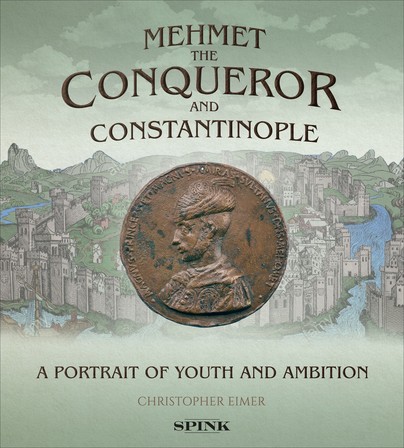
Format: Hardback
Pages: 64
ISBN: 9781912667666
Pub Date: 15 Mar 2022
Description:
In its significance for both Islam and Christianity, and ultimately the wider world, the fall of Constantinople on 29 May 1453 was to herald the dawn of the early modern period and bring universal recognition to the man forever known as Mehmet the Conqueror, or Sultan Mehmet II (1432-1481); who at the age of twenty-one had brought the millennium-old Byzantine empire to an end. The very improbability of such an accomplishment, after many failed attempts on Constantinople by different factions over the centuries, was to only add to Mehmet’s growing status; while his quest for territorial acquisition over the following twenty-five years, in the establishment of an Ottoman empire, was to place this dynastic family on the international stage, where they would remain a significant political force over the following five centuries. Little material evidence has survived from the formative period of Mehmet's life, and certainly nothing of any direct significance such as a portrait.
However, Mehmet had an enduring interest in that genre, though it was naturally assumed that after an absence of more than five centuries a portrait of the young sultan in any form had simply not survived the intervening period. The appearance of a circular portrait relief of the sultan was thus to be of more than passing interest, given the youthfulness of the turbaned Muslim sitter, who was immediately identifiable as Mehmet the Conqueror from both his modelled bronze relief profile and the titles encircling his portrait, addressing its subject in Latin as the 'Great Prince and Great Emir, Sultan Master Mehmet' - Magnus Princeps et Magnus Amiras Sultanus DNS [= Dominus] Mehomet. The willingness of Mehmet to commit his imperial vision to the hands of a western artist at such an early period of his life is at the heart of this extraordinary episode, which embraces the looming extinction of the millennium-old empire of Byzantium, an expanding Ottoman political enterprise and the fall of Constantinople itself. It represents a fusion between east and west that is without parallel in the mid-fifteenth century. Indeed, so directly can the commission of the bronze relief be linked with Mehmet that beyond the revelation of his youthful, and enigmatic, portrait is the remarkable sense of an event of historic proportions, now viewable through the eyes of the protagonist himself.
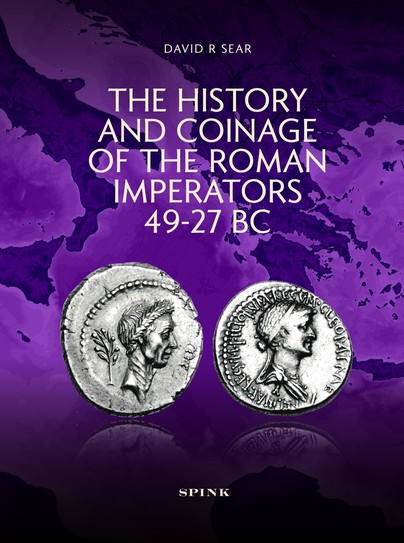
Format: Hardback
Pages: 392
ISBN: 9780907605980
Pub Date: 15 Mar 2022
Description:
The brief period covered by The History and Coinage of the Roman Imperators witnessed the violent transition of the Roman state from a republican constitution, presided over by the Senate, to a full military autocracy under the control of one man, the Emperor Augustus. In reality, the events of these years were merely the culmination of a movement which had been gathering strength over the preceding half century, since the rise of men such as Marius and Sulla. Caesar had put events into motion by his invasion of Italy and his challenge to Pompey’s dominant position in Roman politics.
With his assassination on the Ides of March, 44 BC, Caesar’s role was inherited by his youthful great-nephew Octavian who, against seemingly hopeless odds, succeeded in eliminating his rivals for supreme power, notably Mark Antony and his ambitious consort Cleopatra, Queen of Egypt. This book traces in detail the unfolding of this drama. Each of its six chapters includes a comprehensive catalogue listing of all the relevant coin types and varieties, each with a full discussion of its significance in the interpretation of the events of the period. Information on the rarity of each type, including estimates of their value when first published in 2000, are presented in a separate table. The numerous, though less precisely understood, local coinages of the Imperatorial period are listed in an extensive appendix. Whilst providing a comprehensive numismatic reference work for the age of transition from Republic to Empire the author has also aimed to heighten the historian’s awareness of the vital role which may be played by the numismatic evidence in the detailed chronicling of events.
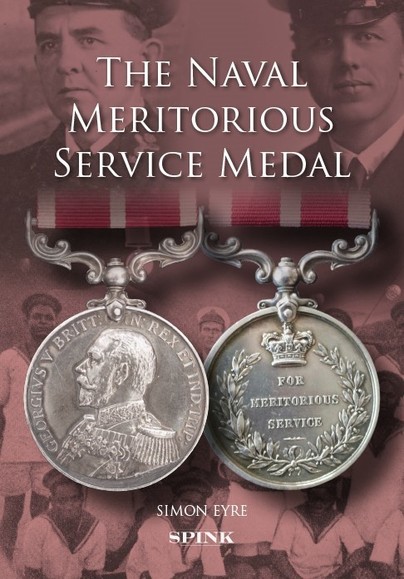
Format: Hardback
Pages: 240
ISBN: 9781912667673
Pub Date: 15 Mar 2022
Description:
The Naval Meritorious Service Medal is an account of the development of the medal which largely replaced the Distinguished Service Medal from 1918 as an award for acts of gallantry not under enemy fire, as well as providing an appropriate award to recognise the many men who provided long and meritorious service. This medal has previously remained largely un-researched but this account draws together the surviving recommendations for these awards, providing an analysis of the campaigns for which the awards were made as well as detailing the Army and Royal Air Force Meritorious Service Medal awards made to Naval personnel. The work provides a definitive history of these awards, and is a fitting companion to the author’s previous work detailing the history of the Distinguished Service Medal.
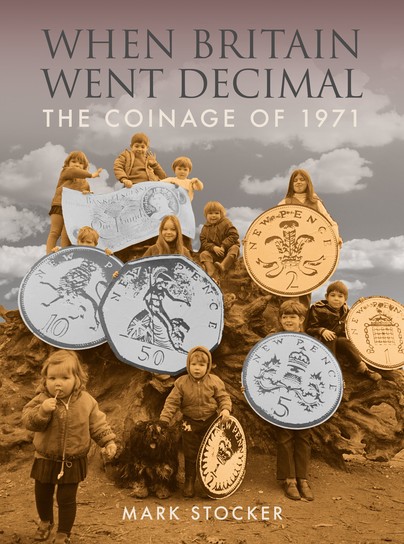
Format: Hardback
Pages: 320
ISBN: 9781912667567
Pub Date: 15 Mar 2022
Description:
The United Kingdom was the last major nation-state in the world to adopt decimal currency, 50 years ago in 1971. Why was it so slow to do so? What changed politicians’ and peoples’ minds about it in the 1960s?
Were Britain’s plans to join the EEC influential? What was the impact of South Africa, Australia and New Zealand going decimal several years earlier? Or did it simply happen because of common sense, with a decimal system so much easier to learn and use than pounds, shillings and pence? The route to find the right designs was a complex one, with interfering politicians, struggling artists, and at one stage an angry Duke of Edinburgh! It took over five years to get there, and then there was the seven-sided 50 pence – a design classic we would say today, but what did the media and public think of it when it was launched in 1969? When Britain Went Decimal takes readers through the changeover leading to D-Day (decimalisation day), and beyond: how smooth and successful was the process? Did newspapers secretly hope it would fail? While decimalisation might have seemed right at the time, did it lead to inflation, as many people believe today? Entertainingly written and beautifully illustrated, this first book on decimalisation since 1973 attempts to answer all these questions and more, looking as much at the design – indeed the ‘art’ behind the new coinage – as at social, economic and political history.
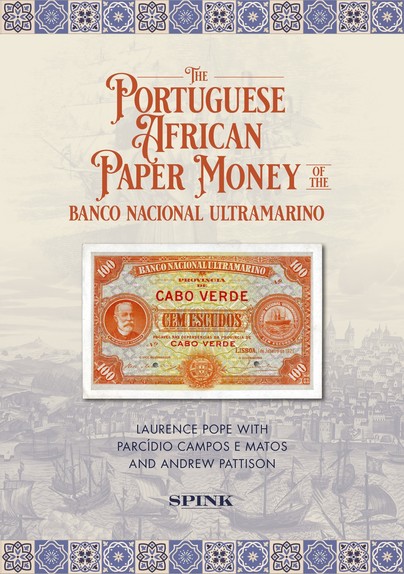
Format: Hardback
Pages: 528
ISBN: 9781912667604
Pub Date: 28 Dec 2021
Description:
This meticulously researched and fully illustrated catalogue details all of the paper money of the Banco Nacional Ultramarino used in the five Portuguese African colonies of Angola, Cape Verde, Mozambique, Portuguese Guinea and Saint Thomas & Prince, between 1865 and 1975.
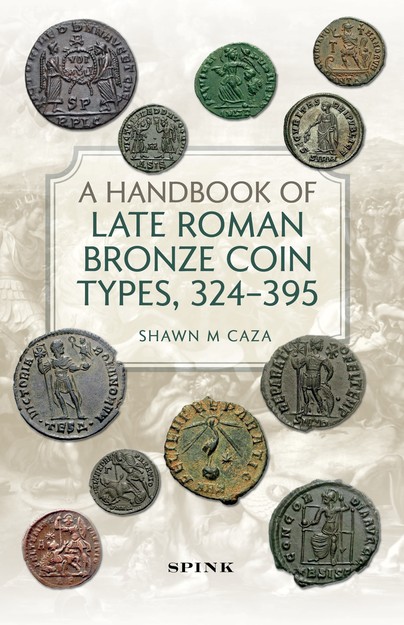
Format: Hardback
Pages: 352
ISBN: 9781912667611
Pub Date: 20 Jun 2021
Description:
Extensively illustrated, each entry includes details on dates, mints, personalities, weight standard, important variations, and the history and meaning of the legend and design. Detailed information about the late Roman bronze coinage system. Extensive introductory notes in Chapter One discuss the life-cycle of late Roman bronze coins (manufacture, circulation, loss and the effects of burial) as well as their weight, fineness standards and contemporary value.
The introductory sections of the subsequent chapters, each of which is dedicated to a short time period, cover the history of that period and the metrology (weight, size and metallic composition), overall pattern, and mint and field marks of the coinage of those years. First detailed examination of the coinage of this period by reverse design. By examining late Roman bronze coinage through the study of reverse types, this book provides different insights from those gained through an examination of the coinage by Mint (as found in The Roman Imperial Coinage series) or by emperor (as found in the Roman Coins and their Values series). Many major numismatic works covering this time period are out of date. This Handbook incorporates the latest numismatic scholarship and includes extensive footnotes and bibliography. The easy to use (indexed and cross-referenced) catalogue entries will be of interest to collectors, cataloguers and researchers. The historical and metrological discussions will appeal to scholars, numismatists and students. A focus on reverse types provides scholars working with hoards or site finds with much greater insight into dates and other aspects of the coinage than simply identifying the emperor.

















